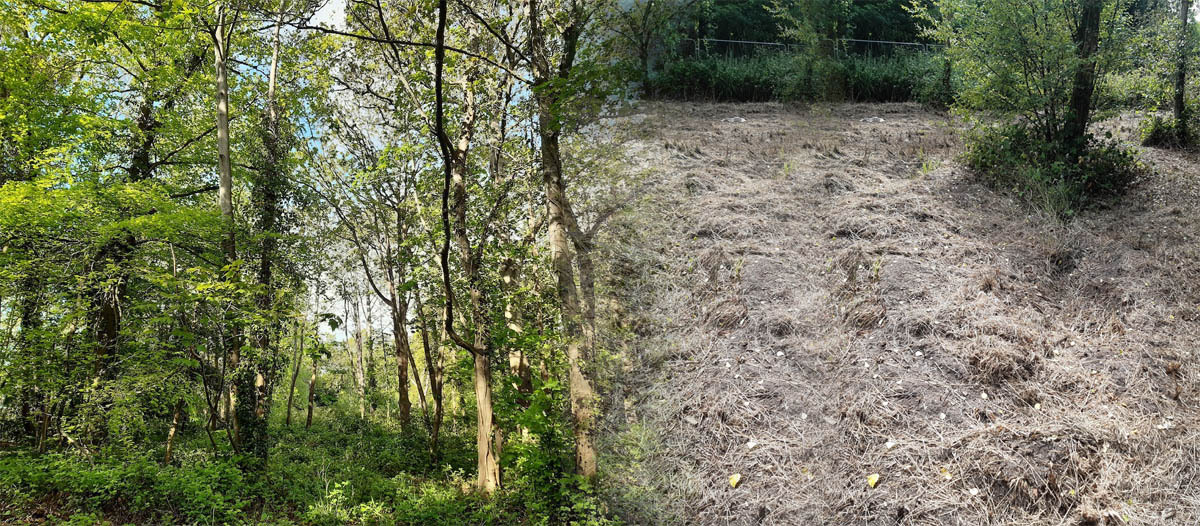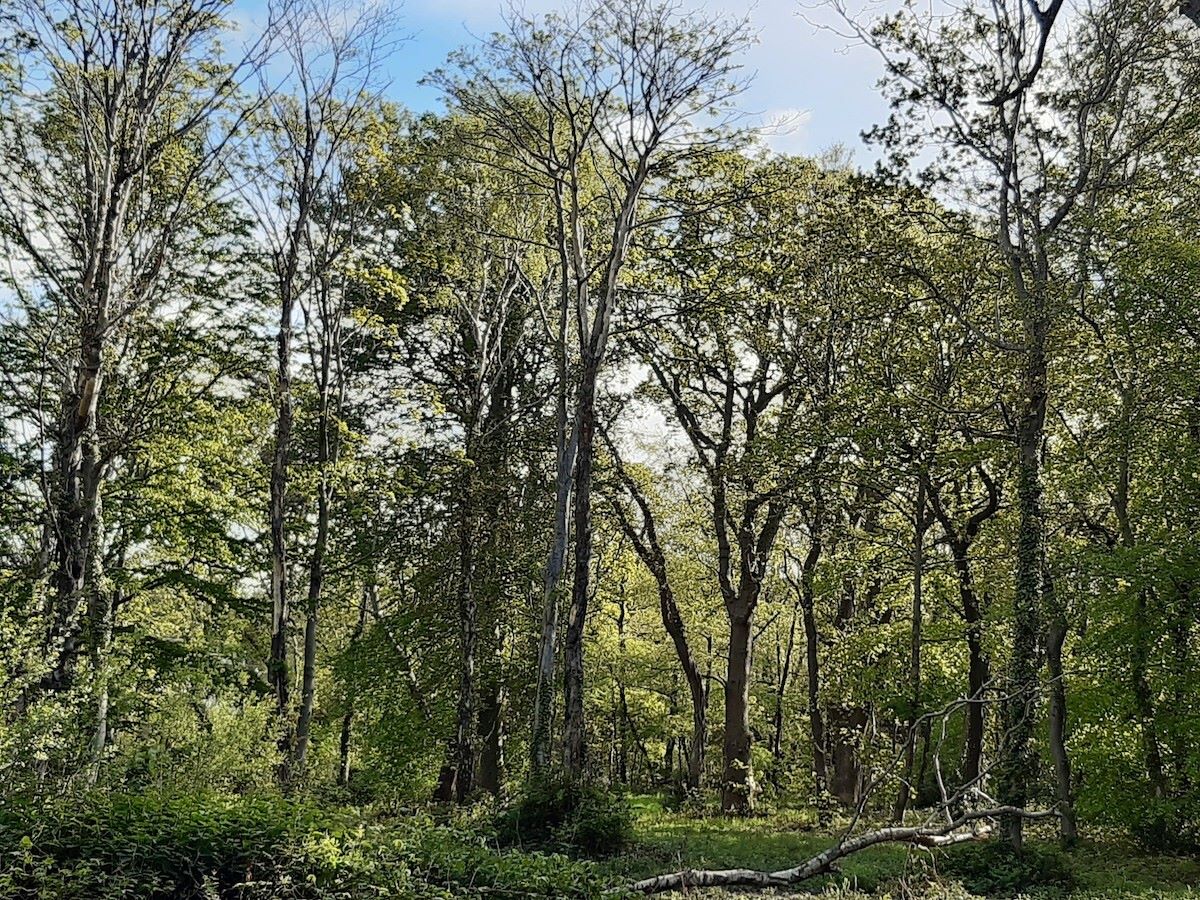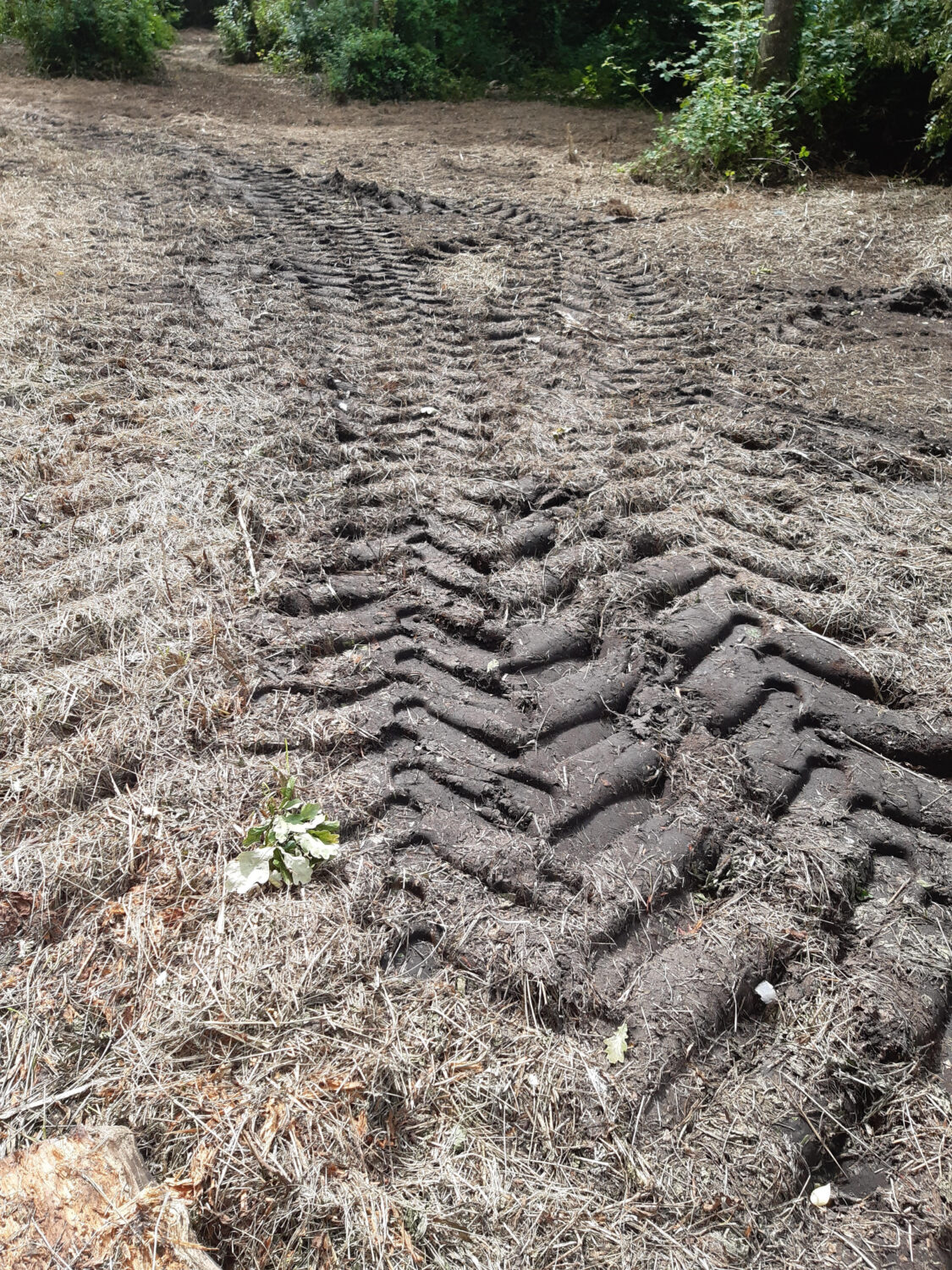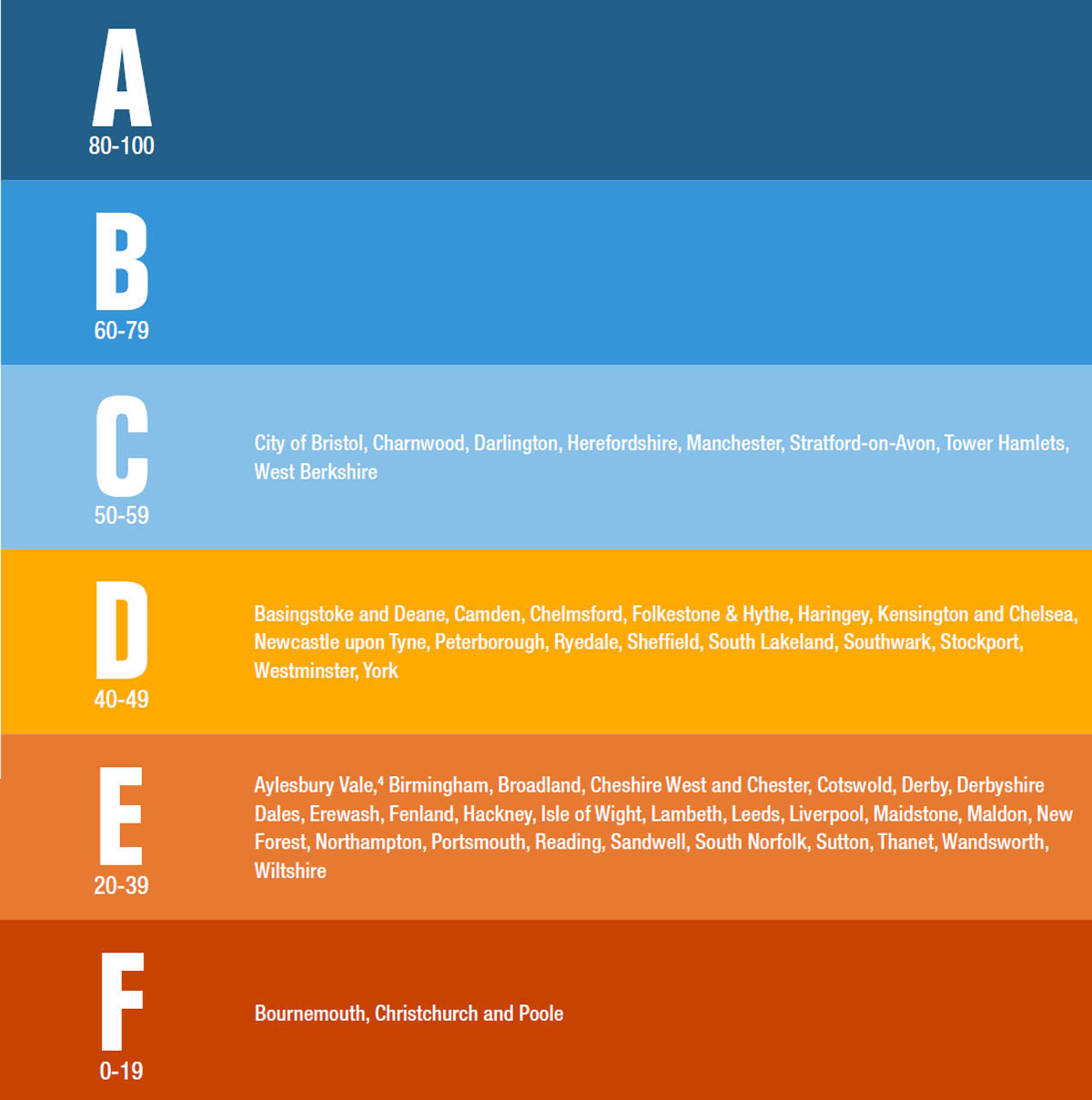
Sometimes a small issue can cast a big shadow. It just depends how much light you shine on it. A small story can act as a signpost to much larger concerns. This is certainly one of those.
In June 2022 a team of demolition vehicles entered a small village wood in Highcliffe, Dorset. They arrived without warning, mounted the kerb between two parked cars, and set about ripping out the undergrowth. Young trees, bushes, flowers and other flora were razed to the ground, leaving chippings and tyre tracks behind. Almost a hectare of protected woodland was destroyed, burrows and birds’ nests among the wreckage.
A day after neighbours had bombarded their local council with anxious calls, and with no sanction in sight, the owner of the woodland carried on with the job.
Welcome to the Battle of Jesmond Wood, a six-year-long showdown between a community and a property developer (and, perhaps, a local government). This saga has everything: corruption and cronyism, residents in uproar, accusations of council misconduct, and of course the all-pervading influence of money.
And at its heart there’s a worrying question: is our natural environment safe any longer?
First, a quick local history lesson. Decades ago a woodland in Highcliffe was acquired by the local council from a developer, in order to build a relief road. But plans changed, and by 2001 the council had recognised the ecological value of the area – the last remnants of an ancient forest. A mile-long stretch of woodland was designated a protected wildlife corridor. At the centre is Jesmond Wood.
The wood is a valuable ecosystem, numbering around a thousand trees. It’s home to many species of protected bats, and various bird species on the RSPB’s Red List. Grass snakes and slow worms have been found here. Locals have watched foxes, hedgehogs and even deer in the ‘corridor’, and one resident swears that badgers also visit. Animals use it because it’s a unique shelter and passage through suburbia. If Jesmond Wood were to fall, there would be no wildlife corridor.

But the tranquillity ended in 2015. The former owner exploited a loophole in the original sale contract, and the wood fell back into private hands. And that’s when things got interesting.
Between 2017 and 2022, the Poole-based developer Brentland Ltd has submitted four applications for a housing development on the site. This would involve the loss of hundreds of trees and most of the woodland area. Two applications were rejected, one was withdrawn, and the last, application 8/22/0306/FUL, is under consideration right now. This latest bid is for 17 houses, far fewer than originally proposed.
There was conflict right from the start. Residents have been largely against any development on the site, motivated not through some ‘NIMBY’ impulse, but as custodians of a fragile ecosystem. A campaign group was formed, which has its own Twitter account. Each application has prompted hundreds of written objections from the community.
In the other corner is Chris Bulstrode, owner of Brentland Ltd. He describes Jesmond Wood as “private building land” and has dismissed local ecological concerns. Needless to say, Bulstrode isn’t the most popular man in Highcliffe.
The woodland clearance in June was the third such occasion, and certainly the worst. Each occasion has been around the time that a planning application is being considered by council officers. Residents have suggested the purpose is to conceal the evidence of a thriving animal habitat, and to persuade councillors to approve development. On one occasion in 2021, the woodland floor was scoured just days after the Woodland Trust lauded the discovery of designated Ancient Woodland flora.
There’s more. At one point huge wooden hoardings were erected around the site, then replaced by metal fencing, which remains to this day, without permission. Bollards were illegally removed to facilitate vehicle access into the wood. Trees have been felled despite being under preservation orders. Residents have been communicating these and many other issues to Bournemouth-Christchurch-Poole (BCP) council in recent years, yet BCP has never sanctioned the owner or taken further steps to protect the woodland.
Then in February 2021 came another twist. A local newspaper reported that the original sale contract contained a so-called ‘overage clause’. This would oblige the owner to pay the council a further fee of up to £300,000, if a development was approved. There was a further damaging allegation, that BCP’s Conservative leaders had pre-emptively discussed how to spend the payment. It was suggested they’d gone so far as to offer to direct the money to Highcliffe, if the village’s parish council supported the application. The article even name-checked council leader Drew Mellor.
For Highcliffe’s beleaguered residents, the allegation seemed to answer a question. Why had BCP Council refused to challenge Brentland’s activities? Could there be 300,000 reasons?
Although the claim was denied, suspicions lingered. But recently the story was revived, not by the council or the owner, but through a resident’s Freedom of Information request. The publication of the original sale contract proved that BCP Council would indeed receive the sum of £300,000, as soon as it approved any development on the woodland. Clearly council officers and councillors had known about this potential bonus payment for years.
In the meantime, local attention focused not on the money or the bulldozers, but on planning policy. ENV15 is the name of the policy adopted in 2001, which should protect Highcliffe’s wildlife corridor. Its wording and purpose give it a unique effect: the reservation of the woodland area for wildlife movement. Locally this policy is seen as the last line of defence against development.
Is this why BCP Council’s Conservative leadership is trying to undermine it?
Here the story twists even further. In Spring 2021, Highcliffe’s own parish council signed off a draft Neighbourhood Plan (NP), containing a suite of proposed policies to inform planning and environmental matters in its ward. The next step was to submit the NP to the larger BCP council for approval. It proposed 32 green spaces for continuing protection of the environment. BCP rejected two of these. One of the two sites rejected was Jesmond Wood.
At the time of writing, the policy is still being challenged by BCP council. In its arguments, BCP describes Jesmond Wood (still a protected wildlife corridor) as a “potential area of housing”. BCP officials are essentially arguing for policy ENV15 to be disregarded in this case. That would make it easier for the site to be developed in the future.
And earlier this year another trap was set for Jesmond Wood. The BCP Local Plan is a proposed framework of policies and site allocations which will govern development across the whole BCP region for a generation. This will take precedence over Highcliffe’s parish NP.
A first consultation for BCP’s Local Plan was published early in 2022. Highcliffe residents were horrified at the map for ‘ecological networks’, which omitted Jesmond Wood from the plan. Notably, the BCP-drafted map didn’t even mark the woodland as an ‘existing’ green space. According to their consultation document, it doesn’t even exist.
BCP council leaders Drew Mellor and Phil Broadhead have both been linked to the battle, and support for Jesmond Wood seems unclear. Councillor Broadhead himself triggered a frustrated outburst from residents on social media, and the administration remains deeply unpopular in Christchurch. But what about BCP executive officers? Can they help?
Apparently not. This writer is among a number of Highcliffe residents whose correspondence has been studiously ignored by CEO Graham Farrant and other executives. And a formal complaint lodged against BCP council in May has not yet even been acknowledged, let alone actioned. (Then again, BCP is experiencing unprecedented levels of complaints).
As the saying goes: just because you’re paranoid, it doesn’t mean they’re not out to get you. And with multiple actions or omissions by BCP all threatening the future of this habitat, residents are worried the council has chosen a side.
Which brings us to the present planning application. Almost 200 public objections have been lodged, in addition to objections from Dorset Wildlife Trust and BCP’s own Trees Officer. The outrage at the destruction in June has at least shone a light on the controversies surrounding this case.
But will it be enough? Some local councillors have voiced fears about alleged bias within the Conservative-dominated planning committee – concerns echoed by the area’s residents’ associations. And Highcliffe’s own parish chairman has expressed frustration at its treatment by BCP council. The mood in this small coastal community is bleak.
Beyond Jesmond Wood, this saga points to wider questions. Developers prefer greenfield sites because they’re cheaper to build on than brownfield. So how can we preserve our woodlands and other green spaces in the face of such powerful commercial pressures? And with climate and environmental crises becoming more urgent, can we trust local and national governments to act for the long-term good?

In Highcliffe, the residents wait nervously. A police investigation has been launched into the attack on the woodland. The planning application is under consideration by BCP officers, with a decision expected within weeks. On the face of it, the proposed development should be rejected, but nothing can be taken for granted.
The Battle of Jesmond Wood may have a few twists yet.






